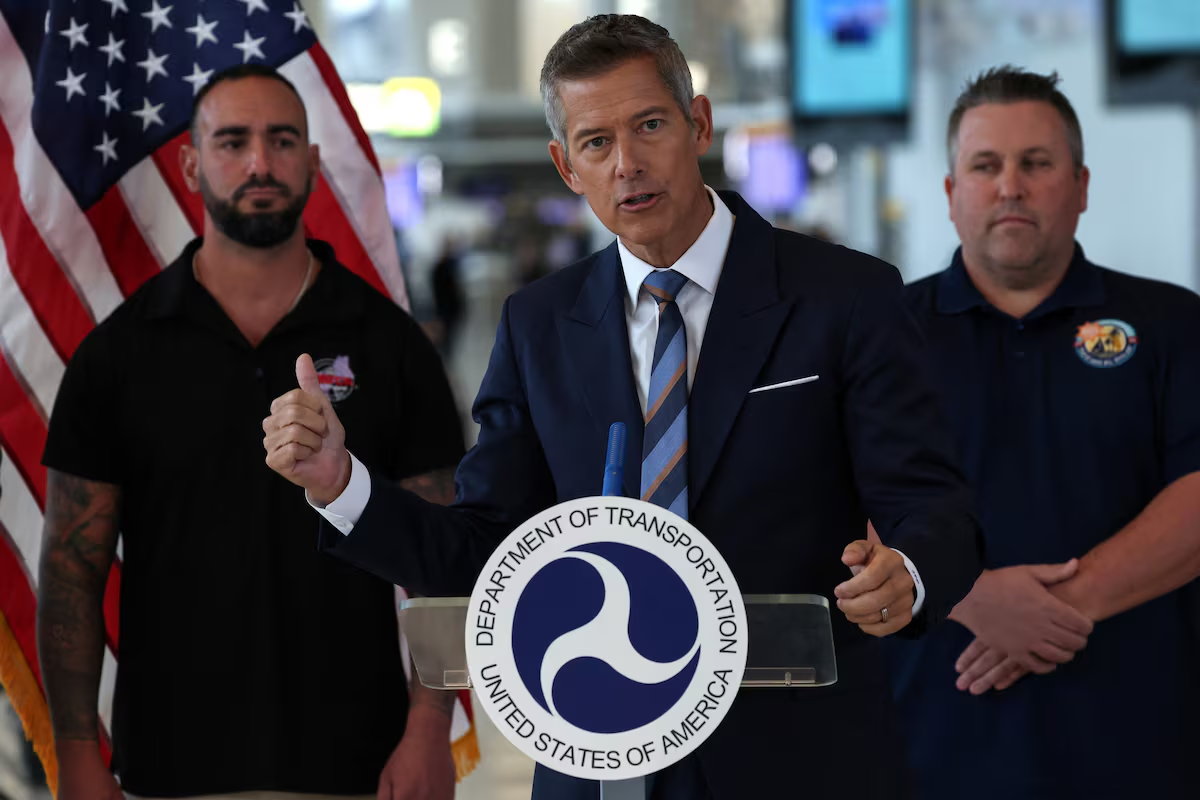U.S. Transportation Secretary Sean Duffy warned that if the government shutdown continues for another week, authorities may be forced to partially close national airspace. He said such a move would create chaos in air travel and has already driven airline stocks lower.
The shutdown, now in its 36th day amid a political deadlock over the federal budget, has forced air traffic controllers and airport security staff to work without pay. Staffing shortages are worsening, leading to widespread flight delays and longer wait times at security checkpoints.
According to industry estimates, since October 1—when the shutdown began—more than 3.2 million passengers have faced delays or cancellations due to rising absenteeism among air traffic controllers. Airline representatives have voiced concern to lawmakers about the impact on the industry.
“If the shutdown doesn’t end within a week, you Democrats will see massive chaos, widespread delays and flight cancellations. We may have to close parts of the airspace because we simply won’t be able to manage it,” Duffy said at a press conference. “We’ll restrict flights if we believe safety is at risk.”
His remarks marked the Trump administration’s most serious warning yet about the consequences of the air traffic controller shortage. Following the minister’s comments, shares of Southwest, Delta, United and American Airlines fell between 3% and 5%.

U.S. Government Shutdown Threatens Millions of Families
Federal Aid Programs—from Food Assistance to Utility Payments—Are Suspended Amid a Budget Crisis Caused by the Funding Blockade

Gold Hits a Record $4,000 per Ounce
Investors Lose Confidence in the U.S. Economy Amid the Ongoing Shutdown
Duffy did not specify how a possible restriction of U.S. airspace would be implemented. Experts warned that even a partial closure would cause disruptions nationwide, given the interconnected nature of the air traffic control system. “You can’t just shut down one sector without affecting the others,” said Sheldon Jacobson, a professor at the University of Illinois.
The last time U.S. airspace was fully closed to domestic flights was on September 11, 2001, following the terrorist attacks.
The 35-Day Shutdown Has Led to an Air Traffic Controller Shortage and Widespread Airport Disruptions
Airlines say the shutdown has not yet significantly affected their business, but warn that bookings could start to drop if it drags on. Over the past month, tens of thousands of flights have been delayed, and on Tuesday alone the number exceeded 2,900. The Federal Aviation Administration (FAA) was forced to impose departure restrictions in Phoenix and Houston due to staff shortages in Denver, Detroit and several other cities.
According to FAA Administrator Bryan Bedford, between 20% and 40% of controllers at the country’s 30 largest airports are not reporting for work. Democrats blame Republicans for refusing to negotiate on reopening the government. The shutdown has exacerbated staffing shortages: about 13,000 air traffic controllers and 50,000 Transportation Security Administration employees are working without pay, leading many to call in sick or stay home entirely.
In 2019, similar disruptions in the aviation system forced Congress to end a 35-day government shutdown during Donald Trump’s first term.
